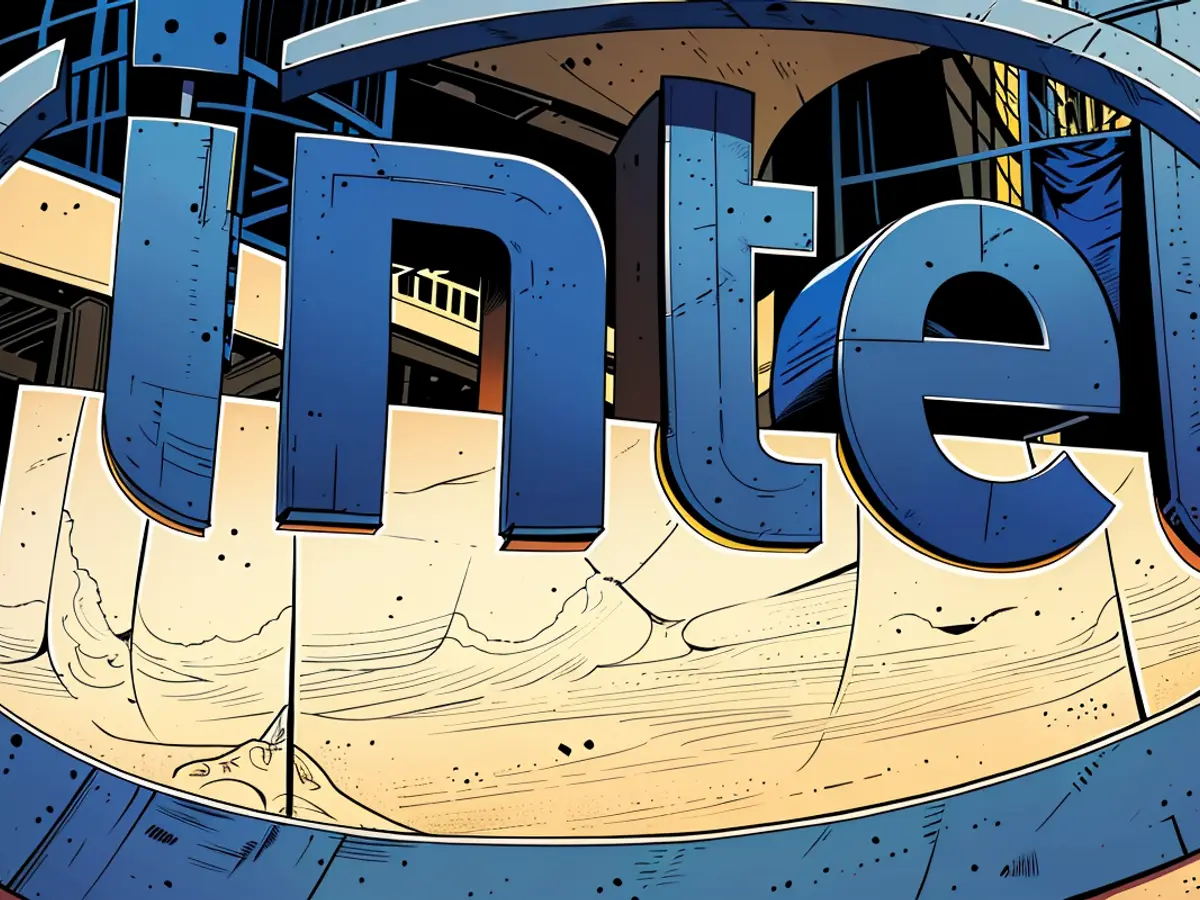- Is a massive Intel spark plug in the Magdeburg chip factory?
Stumbling semiconductor pioneer Intel resorts to drastic job cuts to quickly reduce costs. Around 15,000 jobs - about 15 percent of its workforce - are set to be eliminated, Intel CEO Pat Gelsinger announced to employees. The goal is to save more than $10 billion by next year.
Intel's stock plunged nearly 30 percent at the start of trading on Friday, marking its worst single-day drop in over four decades, according to data from Bloomberg.
The planned new chip factory in Magdeburg could face headwinds. While Gelsinger reaffirmed Intel's commitment to the "IDM 2.0" strategy to expand manufacturing capacity, he offered no specifics on investment plans in Germany, France, and Italy. Instead, he announced that Intel would adjust investments more closely to demand.
State government: No changes for Magdeburg
However, the state government in Magdeburg expressed optimism. "According to Intel, there are no changes to the plans for the Magdeburg location," said Matthias Schuppe, spokesperson for Minister President Reiner Haseloff (CDU), to the German Press Agency.
Job cuts could even exceed the 15 percent announced by Gelsinger. In a press release, Intel spoke of "more than" 15 percent, and the number of employees was given as 116,500 at Intel and around 125,000 including subsidiaries.
Chip manufacturer for others
To survive, Gelsinger's strategy involves Intel becoming a more significant contract manufacturer for other chip developers. The company aims to master the most advanced production processes to compete against established producers like TSMC from Taiwan. Meanwhile, Gelsinger has positioned Intel as a key player in plans to bring more chip production back to the West from Asia.
This includes a planned $30 billion factory in Magdeburg, which was expected to use the most advanced production methods. Intel is still awaiting approvals, including for billions in subsidies to help offset costs. The first groundbreaking was previously targeted for the end of the year, with production starting in 2027.
Could cost-cutting measures impact Germany plans?
Gelsinger emphasized that the contract manufacturing strategy remains fundamental. However, until there are firm orders, Intel will ensure it doesn't build up too much capacity. The company has also adjusted investment plans to reflect the expected market development, Gelsinger said, without providing further details. Intel also plans to build new factories in the U.S. and secure billions in funding.
Once dominant in the chip industry, Intel has since fallen behind. A pivotal moment was losing the race to supply chips for today's ubiquitous smartphones. Intel hoped to transfer its strength in PC chips to mobile devices, but power-efficient processors based on ARM architectures from British chip designer ARM prevailed. Today, smartphone chips come from competitors like Qualcomm or TSMC.
Intel faces pressure in both PC processors and AI.
Intel now has to worry about its position in the PC market as well. Apple has switched its entire lineup of Mac computers to Arm chips of its own design, resulting in significantly longer battery life. This summer, Microsoft also started using chips with Arm architecture like Qualcomm's Snapdragon processor in new Windows PCs with AI features. However, Intel-powered computers are expected to follow, but they need to hit the market first.
Meanwhile, Intel had to watch from the sidelines as its once much smaller competitor Nvidia became the hottest address in the industry thanks to its chip systems for training artificial intelligence. Intel is also trying to get into this business but is far behind Nvidia.
As part of its cost-cutting program, Intel has decided not to pay dividends for the time being from the fourth quarter. Capital expenditures will now be 20 percent lower than originally planned.
"Costs too high, margins too low."
In an email to employees, Gelsinger sounded quite dramatic. Intel's cost structure is "not competitive," he wrote, among other things. "Our costs are too high, our margins are too low." Revenue was $24 billion lower last year than in 2020, but the number of employees increased by 10 percent. Decisions took too long and there were too many friction losses in the system.
In the last quarter, Intel reported a loss of over $1.6 billion, compared to a profit of $1.48 billion the previous year. Revenue fell by one percent to $12.8 billion (11.9 billion euros) year-over-year and missed analyst expectations.
Investors are losing confidence
Gelsinger called the last quarter's business figures "disappointing." And the situation in the second half of the year will be more difficult than previously expected. The Intel CEO had previously often reassured investors that improvement could be expected in the second half of the year.
Email from Gelsinger to employees
Gelsinger mentioned the need for Intel to become a more significant contract manufacturer for other chip developers, aiming to master advanced production processes to compete with established producers like TSMC. (Computers)
Intel's planned factory in Magdeburg, expected to use the most advanced production methods, might be impacted by cost-cutting measures, as the company adjusts investments more closely to demand. (Computers)








